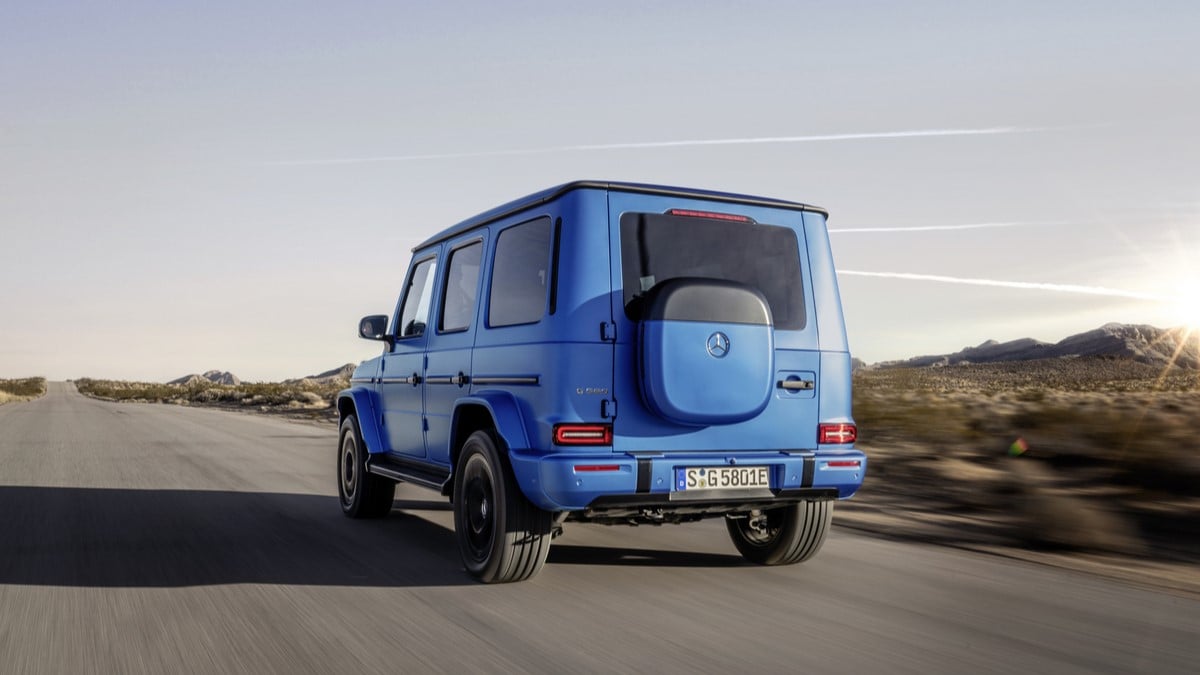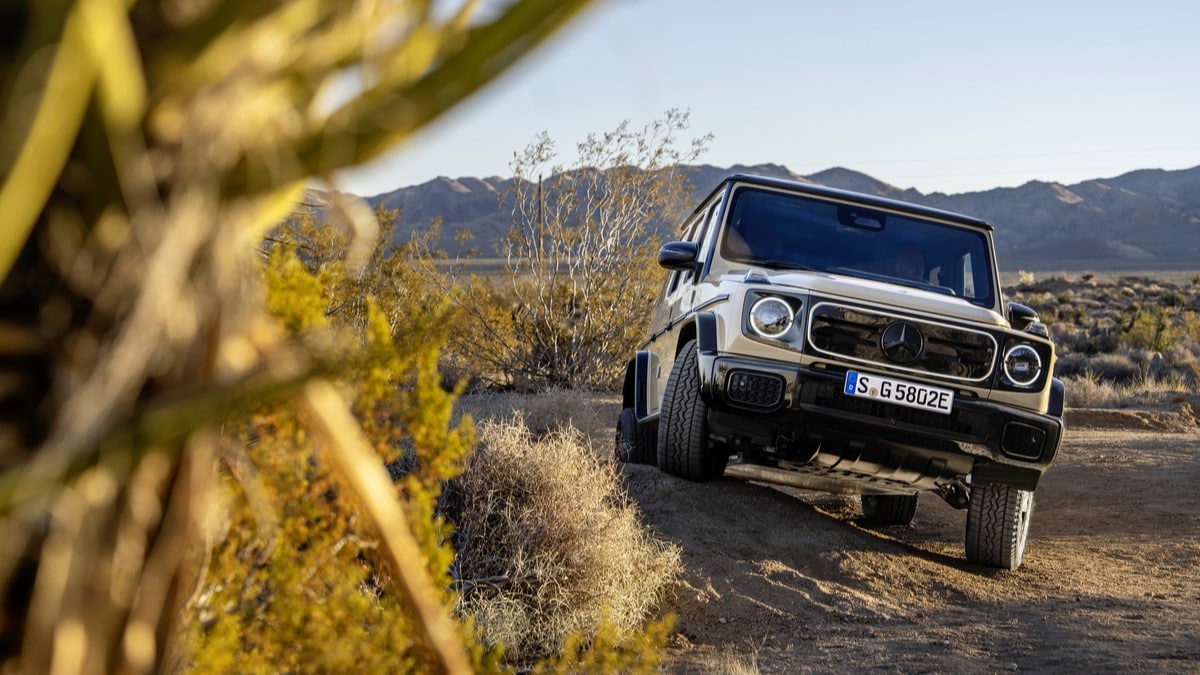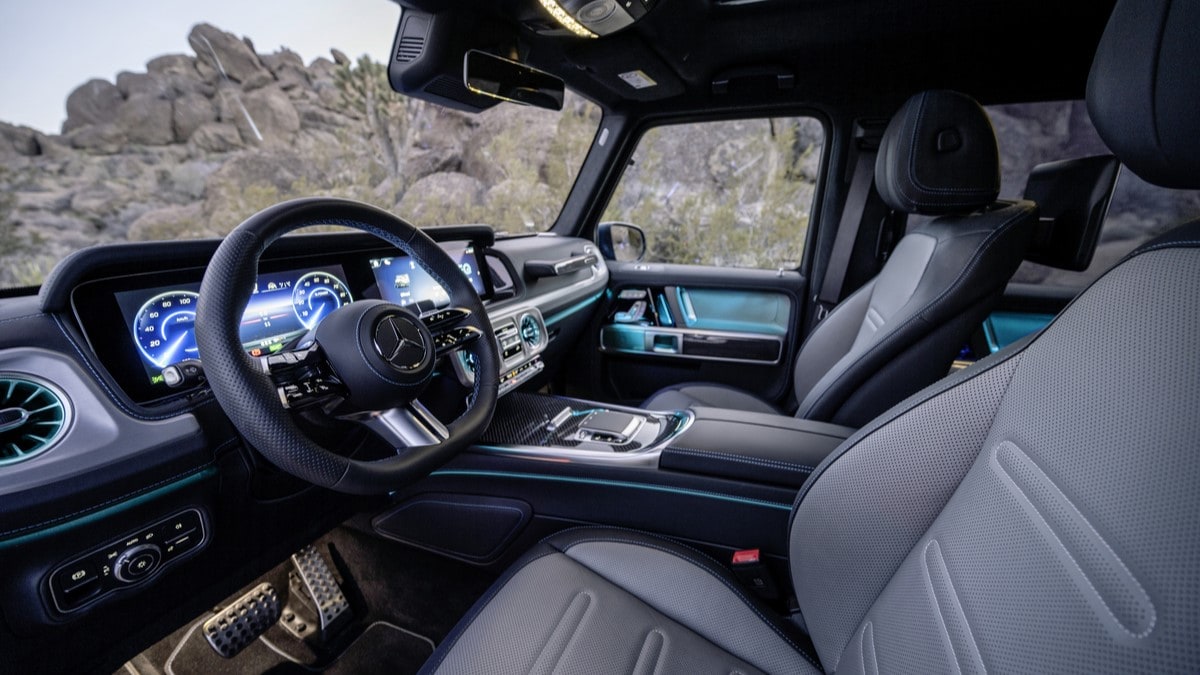There are a tiny handful of cars so iconic that you know them by silhouette alone. The Porsche 911. The Jeep Wrangler. The Ford Mustang. But there’s only one of them so iconic its nickname is more famous than its proper name. The Mercedes-Benz G-Class SUV – the G-Wagen – has represented the right mix of luxury and off-road capability since its late 1970s debut.
It’s the kind of thing you don’t change.
It’s changing.
Mercedes has unveiled something the automotive world has been expecting, nervously, for years – the all-electric G-Wagen.
It’s officially called the “2025 Mercedes-Benz G 580 with EQ Technology.” Mercedes hasn’t revealed pricing for the U.S., or named a precise date it will appear in stores.
But broad outlines, from the shocking horsepower to an innovative frame that promises incredible off-road performance, are enough to get excited about.

It Looks Like You’d Expect It To Look
Mercedes radically changed what powers the G-Class. They didn’t radically change what it looks like.
The electric G-Class wears the same body as the gas-powered model, with a unique false grille (electric vehicles don’t need functional grilles). Optionally, buyers can choose a grille outlined by LEDs and crowned by a lighted 3-pointed star.
A few more subtle tweaks appear to help it function but not ruin the famous boxy lines. These include a slightly raised bonnet and so-called air curtains in the rear wheel-arch flares as well as the design box on the rear, Mercedes says. A roofline spoiler helps with aerodynamics.
Designers changed little inside, too. “Round climate control vents and the grab handle for the front passenger are signature G-Class elements,” the company says. Two 12.3-inch screens – one for the driver instrument panel and a second in the center for infotainment – are standard.
What they display has been updated. Navigation commands can now appear superimposed on a live image of the traffic around you. Drivers no longer need to say “Hey, Mercedes” to trigger voice controls.
The standard Burmester 3D Surround Sound System now includes an illuminated speaker in the headliner and a six-channel amplifier “to enable better frequency separation and sound positioning.”
A “transparent hood” technology uses cameras to show what’s below the vehicle in tricky off-road situations.

Unique Battery Allows for Off-Road Poise
All of that, you know to expect. Until now, we’ve mostly told you how similar the electric G is to the gas G.
The differences, however, are where the real innovation happened.
Engineers found a unique way to combine the best off-roading traits of gas-powered and electric vehicles (EVs) to build a G-Wagen that should be uniquely agile on rocks and mud.
The classic G-Wagen is a great off-roader, in part, because it’s built on a ladder frame like a pickup truck. Ladder frames flex, allowing wheels to stay in contact with uneven ground. Most EVs are too rigid for that. Their immense, stiff batteries make them like unibody cars, unable to flex to keep wheels down on undulating terrain.
The E-G, however, has a battery uniquely “integrated into the ladder frame,” Mercedes says. That should allow it more flex than most EVs, though Mercedes does say it’s “significantly more rigid” than the gas-powered G.

A Motor for Each Wheel Means Maximum Agility
What it gives up in flexibility, though, it gains in agility. The electrified G-Wagen uses four separate motors – one per wheel. That lets each wheel spin at different speeds, if necessary, to negotiate over obstacles.
Rotating one side forward and the other back even allows the SUV to spin in place “on loose or unpaved surfaces.” Mercedes doesn’t recommend the maneuver on paved ground, and it’s worth noting that EV-builder Rivian declined to build the so-called “tank turn” into its quad-motor EVs because it could be very damaging to trails.
Below 15 mph, a low-range setting engages “G Steering,” which turns the vehicle around the axis of the inside rear wheel in a turn. That can “eliminate the need for multi-point turns in certain situations – for example, in sharp bends or other tight spaces,” Mercedes says.
579 Horsepower, 859 lb-ft of Torque
Four motors mean a lot of power. They combine for an output of 579 horsepower and 859 lb-ft of torque. The combination, Mercedes says, is good for a 0-60 mph run in 4.2 seconds on paved surfaces.
Top speed is limited to 112 mph, but no one buys a boxy SUV with military heritage to race on pavement.
Off-pavement, Mercedes says, it will “climb a 100 percent grade on suitable surfaces,” ford 33.5 inches of water, and clear a 9.8-inch obstacle between the axles. The approach angle is 32 degrees, with a 30.7-degree departure angle and a 20.3-degree breakover angle.
Mercedes hasn’t disclosed the range it will have on U.S. roads. On Europe’s testing cycle, the company says, it’s good for 473 kilometers (293 miles) between charges. The range formula America’s EPA uses tends to produce shorter figures.

Proof That the Icons Will Endure
Without range and price figures, it’s hard to evaluate the G-Wagen against its competition. But it doesn’t matter. The G-Class traditionally engages with other luxury off-roaders in a war of angle calculations and turning radius figures. But the competition is just for fun.
In reality, G-Class buyers tend to be people who’ve dreamed of owning one of the most distinctive cars on the road and have the financial resources to buy one. That’s unlikely to change in the electric era.
An electric G-Wagen, instead, is mostly an exercise in showing that the icons can survive into the 2030s. To that end, an updated G-Class that looks the part, plugs into a charger, and can probably out-maneuver its gas-powered counterpart on the trail is good news.








